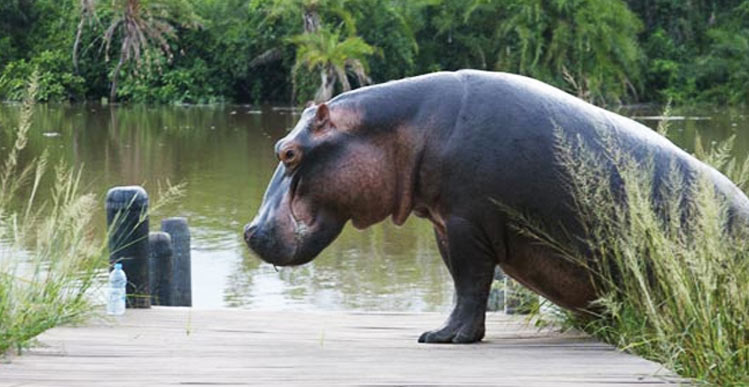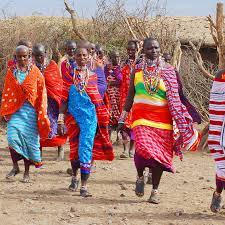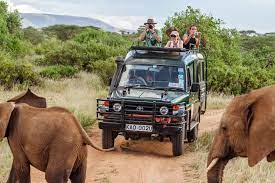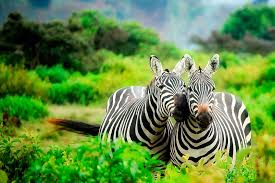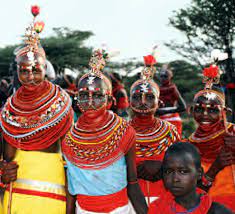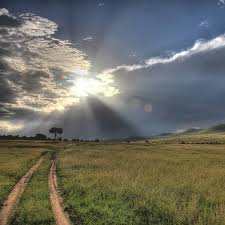Overview
Saadani is where the beach meets the bush. It is the only park in East Africa with an Indian Ocean beachfront. It’s the one place where those idle hours of sunbathing might be interrupted by an elephant strolling past, or animals coming to drink at the nearby waterhole. Also, a sight to behold are the Swahili fishermen casting their nets at sunrise.
Best Time to Visit
The best time for watching wildlife in Saadani is after the rains, in January and February, and from June to August, when there is still plenty of water on the plains and wildlife stays within the park. As a general bush/beach break destination Sadaani is good to visit most of the year, except during the peak of the rains from April to May.
Best Time January and February and June to August (Animals are attracted to water in the park)
High Season June to October (Park rarely gets crowded at any time)
Low Season April and May (Access roads might be impassable)
Best Weather June to September (Little rainfall)
Worst Weather March, April & May (Peak of Wet season)
June to September –Dry Season
- Animal densities are higher from June to August after the rains
- Sun is prevalent while rain is rare
- Mosquitoes are fewer, so the risk of malaria is lower
- Animals move out of the park at the end of the Dry season when the water on the plains has dried out
Getting There
The national park is in the vicinity of saadani village, roughly 45 km north of Bagamoyo. Dar es Salaam is at about 200 km away from Saadani village (4 hours’ drive via Chalinze).
From the North you can reach Mkwaja Headquarters from Tanga by crossing Pangani River with a ferry (75 km / 3 hours’ drive). From here it will be another 35 km to Saadani village. Zanzibar is about 40 km away from the Park. Transfer by airplane can be arranged to Mkwaja or Saadani airstrip. There is also a daily bus connection between Dar es Salaam and Saadani village, as well as between Tanga and Mkwaja village. In the rainy season (March–April), the muddy roads can make travelling in the southern parts of the Park very difficult. It is advisable to inquire about the quality of the road before planning a trip
Saadani is usually visited from Dar es Salaam or Zanzibar, and there are scheduled flights connecting all three. The lodges in Saadani also organize road and boat transfers from Dar es Salaam on request. Your entry point in Tanzania is usually Julius Nyerere International Airport (DAR) near Dar es Salaam. In most cases, your tour operator will pick you up from the airport and handle all further ground operations or domestic flights. Chartered flights from Arusha town, the base for the are also available.
Activities
The park is situated between Dar es Salaam (200 km, 4 hours) and Tanga (75km, 3 hours) and borders the mainland coast. The Saadani National Park is home to a variable mix of both marine and mainland flora and fauna. The vegetation in the park is quite unique and includes mangrove forests around the winding Wami River and ocean, clumps of palm trees, coral reefs in the Indian Ocean, short and tall-grass savannah and the harsh black cotton plains. In terms of wildlife, Saadani has a thriving population of waterbucks, wildebeests, hartebeests, reedbucks, buffaloes and giraffes. Warthogs, baboons and colobus monkeys are often spotted, while elephants, lions and leopards are quite shy. But even for ornithologists this place is truly spectacular. A boat safari on the Wami River is a true highlight for any visitor and apart from pods of hippos and huge crocodiles, malachite, pied and even giant kingfishers can also be seen. Other common birds include the woolly necked stork, common sand pipers, lilac-breasted rollers, palm nut vultures, fish eagles and ground hornbills.
Activities in Sadaani National Park include game drives, boat safaris and walking safaris accompanied by an armed ranger. Historical tours to the old Saadani fishing village to see the remains of buildings that existed when this place was a bustling port trading ivory and slaves, can also be organized. Even cultural tours to the main ethnic tribes in the area (Waswahili, Wazigua and Wadoe) are on offer. Further ethnic groups from other regions have also migrated to the region because of better trade opportunities. The Wamangati, originally from the Ngorongoro Conservation Area, send their cattle to Zanzibar on traditional dhows in order to make a living. Unlike as in other national parks in Tanzania, visitors can combine a safari with a relaxing beach stay in Saadani National Park. The beaches are clean and lined with palm trees. Saadani’s coast is hot and humid and swimming is pleasant with the ocean’s temperatures usually reaching around 25°C. Maziwe reef can easily be reached by boat from anywhere along the Saadani coast. Saadani National Park is a place for adventurous and luxury travellers as well as families. Accommodation on offer includes public campsites, luxury lodges and tented camps in- and outside the National Park.
Uniqueness
This is the only wildlife sanctuary in East Africa to boost of an oceanic beachfront, it possesses all the attributes that make Tanzania’s tropical coastline and islands so popular with European sun-worshippers. Yet it is also the one place where those idle hours of sunbathing might be interrupted by an elephant strolling past, or a lion coming to drink at the nearby waterhole!
A traveler gets to relish the palm trees as they sway in a cooling oceanic breeze. White sand and blue water sparkle alluringly beneath the tropical sun, Saadani National park is a splendid place to visit.
Traditional dhows sail slowly past, propelled by billowing white sails, whilst Swahili fishermen cast their nets below a brilliant red sunrise. The park is in the Southern Circuit which is the most untouched natural resources of Tanzania, off the beaten track, away from the crowds of tourists and the sound of other safari vehicles. Here a traveler will find prolific wildlife unscathed by human interaction where the night sky dazzles with millions of stars, and a part of the continent which is untouched by time.
It is located on the north coast, roughly 100km northwest of Dar es Salaam as the crow flies, and a similar distance southwest of the port of Tanga. The park covers an area of 1,062 sq. km. The park is generally accessible all-year round, but the access roads are sometimes impassable during April and May wet season. The best game-viewing season is in January and February and from June to August. The climate is coastal, hot and humid. Saadani national park offers a unique combination of both marine and mainland flora and fauna in a culturally fascinating setting.
About 30 species of larger mammals are present as well as numerous reptiles and birds. Besides many aquatic species such as fish, Green turtles, Humpback whales and dolphins also occur in the ocean nearby.
The park was gazetted in 2005, it encompasses a preserved tropical ecosystem including the former Saadani game reserve, the former Mkwaja ranch area, the wami river as well as the Zaraninge Forest. Before being included in the national park, the Zaraninge Forest was managed by the World Wide Fund for Nature (WWF) whose goal was to preserve the extremely high Bio botanical diversity of one of the last coastal rain forests remaining in Tanzania and in the world at large.

